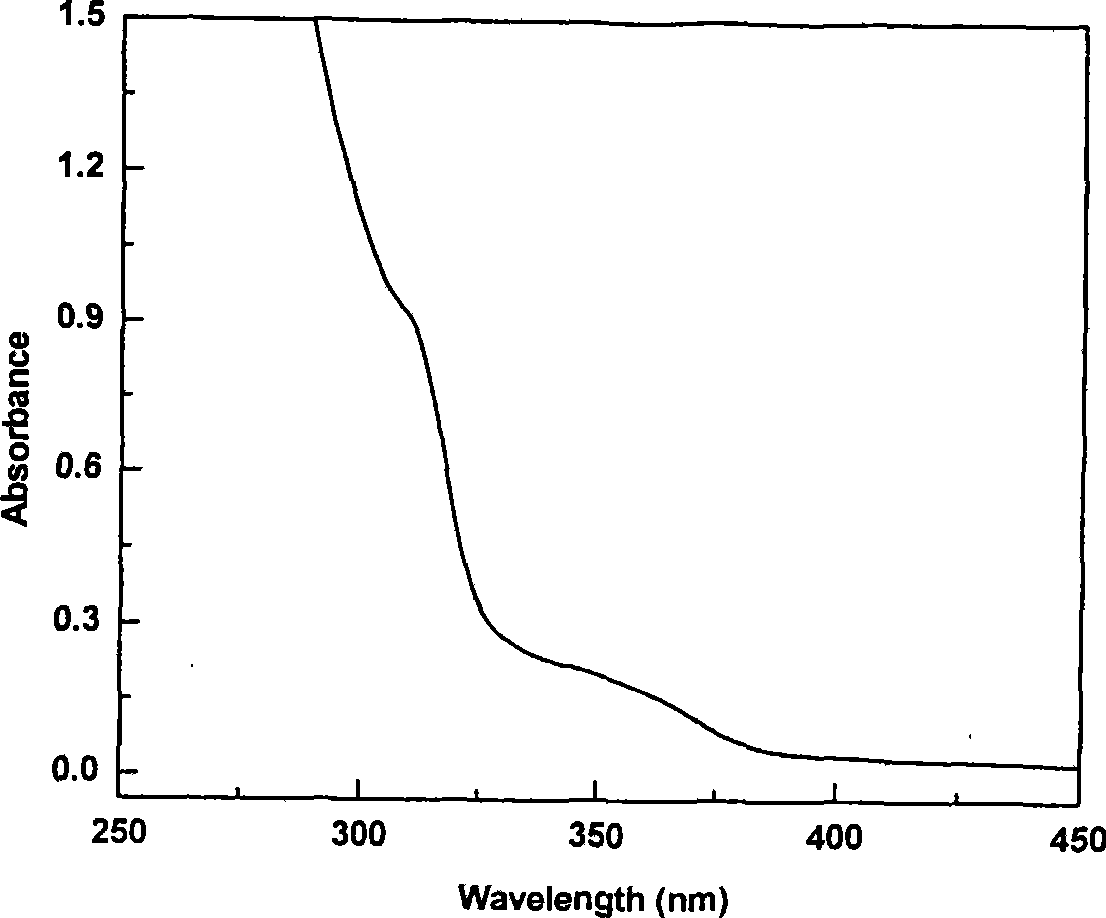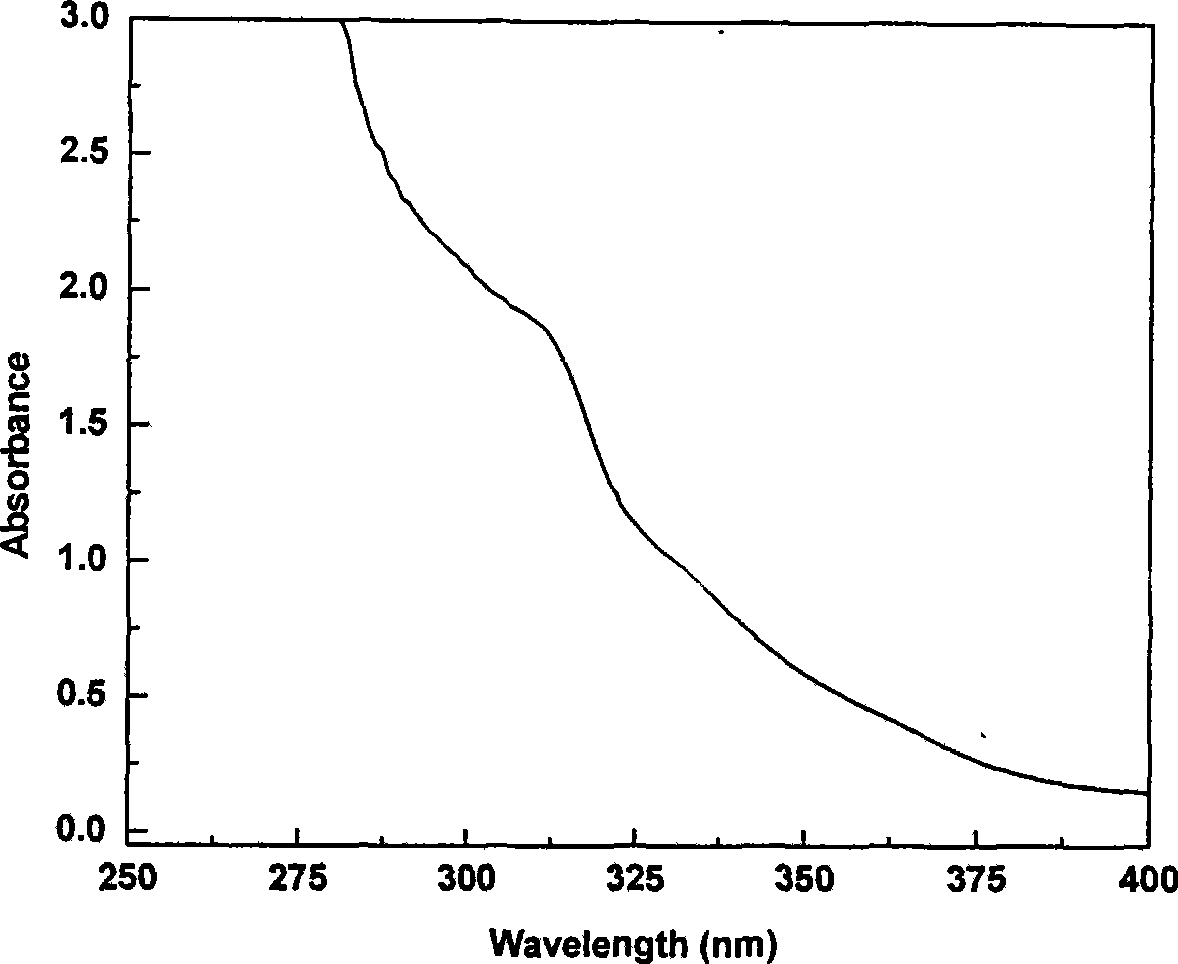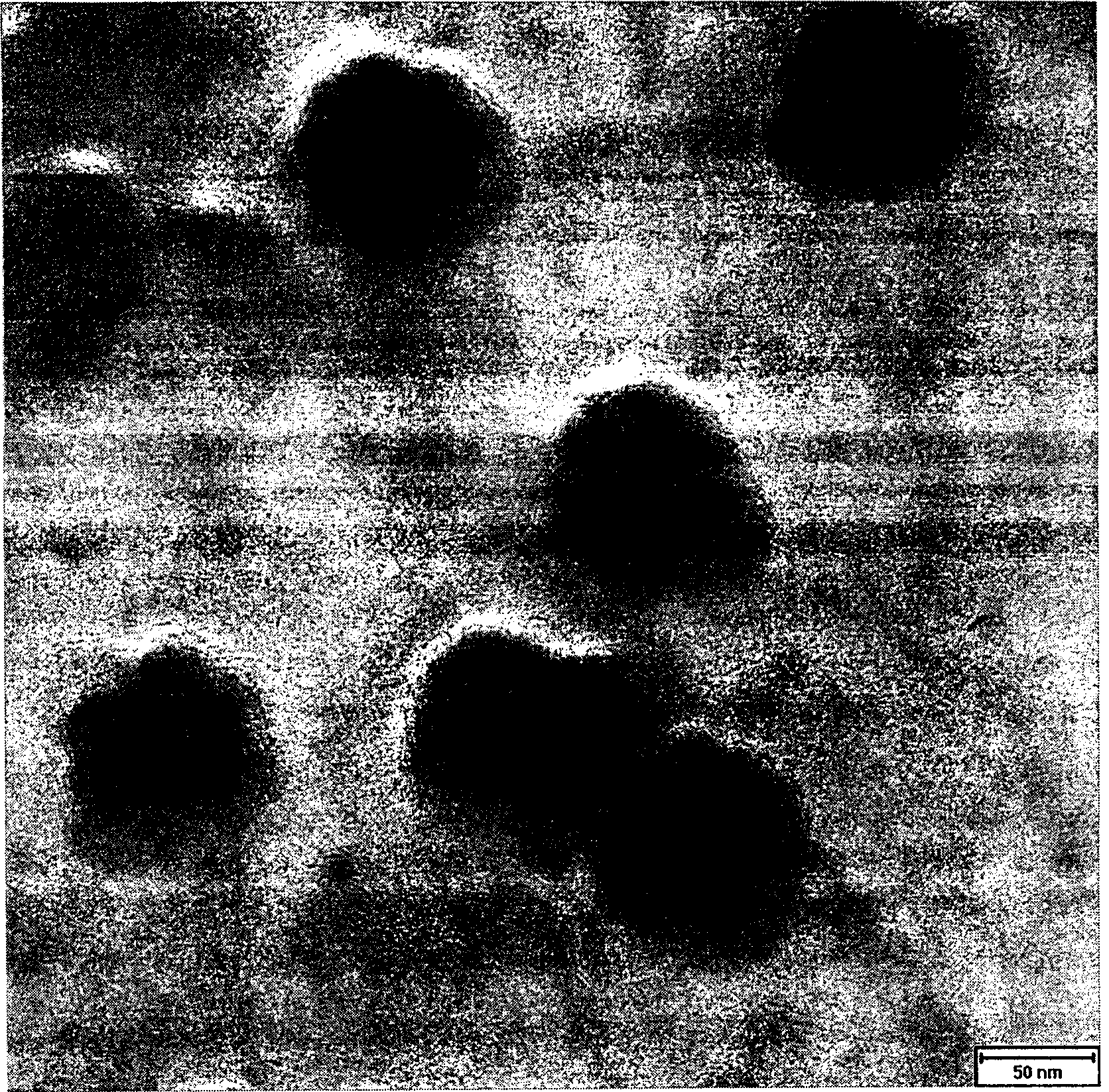Method for preparing zinc sulfide semiconductor nanoparticles
A technology of nano-particles and zinc sulfide, applied in the direction of zinc sulfide, can solve the problem of difficult control of the reaction, and achieve the effect of good compatibility
- Summary
- Abstract
- Description
- Claims
- Application Information
AI Technical Summary
Problems solved by technology
Method used
Image
Examples
Embodiment 1
[0020] Add 44mg of zinc acetate, 62mg of thiourea, 500mg of polyvinylpyrrolidone, and 79g of ethanol into a 250ml three-necked reaction flask. After the temperature of the oil bath is slowly raised to 80°C, under the condition of electromagnetic stirring, the reaction is carried out at a constant temperature for 240 minutes. After cooling the reaction product, the ethanol sol containing zinc sulfide semiconductor nanoparticles can be obtained. Use a rotary evaporator to concentrate the primary product obtained from the above reaction, and then vacuum-dry the precipitate at 40°C for 8-12 hours to obtain a surface-coated product made of macromolecular surfactant polyvinylpyrrolidone. ZnS semiconductor nanoparticles. The obtained zinc sulfide nanoparticles can be better dispersed in polar solvents such as ethanol and water. The results of ultraviolet-visible spectrometry of the samples dispersed in ethanol show that, compared with bulk zinc sulfide semiconductor materials, zinc ...
Embodiment 2
[0022] Add 44mg of zinc acetate, 31mg of thiourea, 100mg of polyvinylpyrrolidone, and 79g of ethanol into a 250ml three-necked reaction flask, and slowly raise the temperature of the oil bath to 80°C. Minutes, after cooling the reaction product, the ethanol sol containing zinc sulfide semiconductor nanoparticles can be obtained. Use a rotary evaporator to concentrate the primary product obtained from the above reaction, and then vacuum-dry the precipitate at 40°C for 8-12 hours to obtain a surface-coated product made of macromolecular surfactant polyvinylpyrrolidone. ZnS semiconductor nanoparticles. The obtained zinc sulfide nanoparticles can be better dispersed in polar solvents such as ethanol and water. The results of ultraviolet-visible spectrometry of the samples dispersed in ethanol show that, compared with bulk zinc sulfide semiconductor materials, zinc sulfide semiconductor nanoparticles can produce quantum size effects.
Embodiment 3
[0024] Add 22mg of zinc acetate, 31mg of thiourea, 200mg of polyvinylpyrrolidone, and 111g of ethylene glycol into a 250ml three-necked reaction flask. After the temperature of the oil bath is slowly raised to 160°C, under the condition of electromagnetic stirring, the reaction is carried out at a constant temperature for 60 Minutes, after cooling the reaction product, the ethylene glycol sol containing zinc sulfide semiconductor nanoparticles can be obtained. The primary product after centrifugation is vacuum-dried at 40° C. for 8-12 hours to obtain zinc sulfide semiconductor nanoparticles surface-coated by macromolecule surfactant polyvinylpyrrolidone. The obtained zinc sulfide nanoparticles can be better dispersed in polar solvents such as ethanol and water. The results of ultraviolet-visible spectrometry of samples dispersed in ethanol show that, compared with the bulk phase of zinc sulfide semiconductor materials, zinc sulfide semiconductor nanoparticles can produce quant...
PUM
 Login to View More
Login to View More Abstract
Description
Claims
Application Information
 Login to View More
Login to View More - R&D
- Intellectual Property
- Life Sciences
- Materials
- Tech Scout
- Unparalleled Data Quality
- Higher Quality Content
- 60% Fewer Hallucinations
Browse by: Latest US Patents, China's latest patents, Technical Efficacy Thesaurus, Application Domain, Technology Topic, Popular Technical Reports.
© 2025 PatSnap. All rights reserved.Legal|Privacy policy|Modern Slavery Act Transparency Statement|Sitemap|About US| Contact US: help@patsnap.com



